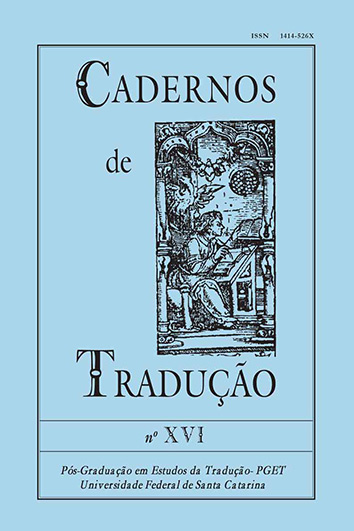O Senhor dos Anéis: a tradução da simbologia do anel do livro para o cinema.
DOI:
https://doi.org/10.5007/%25xAbstract
Nowadays, many books have been translated to the screen, and we always hear critics comparing the literary work with its adaptation. An adaptation does not have to be a copy of the work firstly created, once it is being translated into another system of signs. Since film adaptation is a transmutation of a verbal text into a non-verbal one, it has been for a long time considered something that changes the text created initially. For this reason, what we call today intersemiotic translation, has not been considered translation for years. Therefore, based on Jakobson (1991), this research assumes that filmic adaptation is translation, and chooses the book by J.R.R. Tolkien, The Lord of the Rings: the fellowship of the Ring, and the homonymous film by Peter Jackson, as the corpus for the analysis. Certainly, there are many symbols in the film, and, among them, the Ring is the most relevant. This work does not aim at making any value judgment between the book and the film’s Ring, but analyzomg the strategies used by the director in order to take such a symbol to the screen. Keywords: audiovisual translation, intersemiotic translation, The Lord of the Rings, Tolkien.Downloads
Published
How to Cite
Issue
Section
License
Copyright (c) 2005 Cadernos de Tradução

This work is licensed under a Creative Commons Attribution 4.0 International License.
Copyright Notice
Authors hold the copyright and grant the journal the right for their articles' first publication, being their works simultaneously licensed under the Creative Commons Attribution License (CC BY), which allows the sharing of such works with its authorship acknowledged and its initial publication in this journal.
Authors are allowed to enter into separate additional contractual arrangements for the non-exclusive distribution of the journal's published version of the work (e.g., post it to an institutional repository or as a book chapter, with an acknowledgment of its initial publication in this journal).






















































